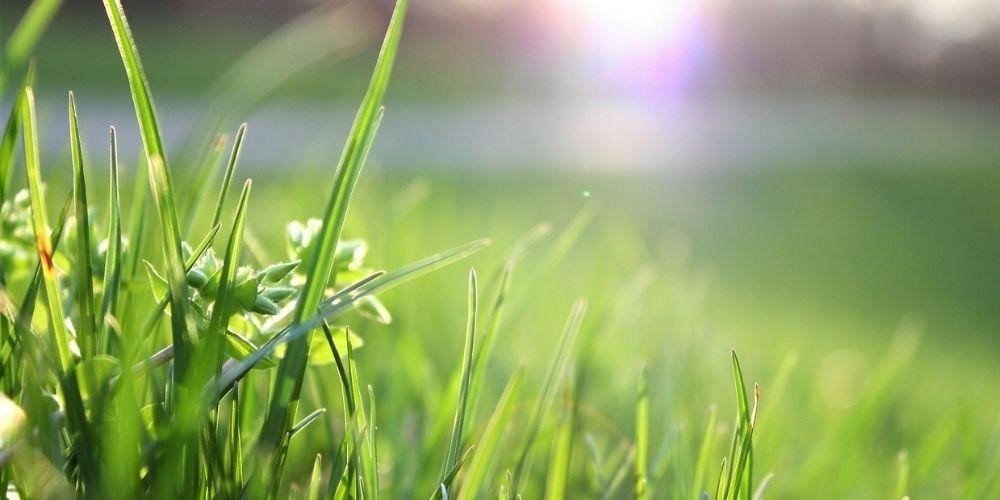Table of Contents Show
As soon as Summer is on the horizon, mowing the lawn becomes all that more important.
You need a nicely trimmed lawn so you’re free to hang out in your garden without being surrounded by tall grass.
In this article, we are going to talk about 5 tips on how to mow the perfect lawn.
You’ll learn about everything from picking the right lawnmower to sharpening your blades.
5 Lawn Mowing Tips
1. Choose The Right Lawnmower

When it comes to mowing your lawn, choosing the right lawnmower is half the battle.
However, with so many different types available, it can be hard to decide.
Anyhow…
Here are the most popular types of lawnmowers:
- Gas-powered
- Electric
- Riding lawn mowers
Gas-powered lawn mowers are the more popular option because they are cordless.
They are also more powerful than electric, making them a great choice for people who have larger and more overgrown lawns.
Electric mowers aren’t as powerful; however, you’re not going to be spending money on gas every time the lawn needs trimming. We recommend electric mowers for people with smaller lawns.
Keep in mind that electric mowers aren’t going to cover as much ground as they need to be connected to a power outlet to function.
With that being said, there are some electric mowers that are battery-powered, which is better.
Finally, you have riding lawn mowers. These types of mowers are designed for commercial use, where you’ll be cutting acres of grass every day.
2. Look Out for Debris
Unless you’re cutting your lawn every day, it’s bound to contain debris from time to time, especially if you have young kids.
While debris probably isn’t going to damage your grass, it may cause problems with the lawnmower.
If you hit debris while cutting the lawn, it could end up damaging the lawnmower.
Moreover, it will also cause the blades to become dull, which affects the final results.
Read Also:
3. Cut the Grass When It’s Dry
Mowing the grass when it’s wet is a big no-no. First and foremost, if you’re using an electric lawnmower, then you’re putting yourself at risk from electric shocks.
Not the most enjoyable way to tidy up the lawn, huh!?
Not only that, but it’s going to affect the overall quality of your work.
Because the grass is full of excess water, it’s going to bend when you try to cut it. In turn, this is going to lead to an uneven cut.
Therefore, it’s important to cut the grass when the weather is good.
Plus, who doesn’t like cutting the grass on a hot summer’s day, right!?
4. Choose The Right Height
The height at which you cut your grass is going to depend entirely on the season.
Most people tend to cut their lawns as short as possible; however, this is a recipe for disaster.
Cutting your lawn really short creates a breeding ground for weeds. Longer grass helps prevent this from happening.
So how long should your grass be?
On average, it’s recommended to keep your grass around 2 ½ inches year-round, excluding spring.
We recommend keeping your lawn at 3 inches in Spring, as this will help prevent weeds from growing.
5. Make Sure Your Blades are Sharp
Contrary to popular belief, dull blades do more than just make your lawn look worse.
When you cut grass with dull blades, it doesn’t actually cut much grass. Rather, it pulls the grass out of the ground.
In turn, this can cause your grass to turn a brown or yellow color.
6. Consider Reusing Your Grass Clippings
While most people throw away their grass clippings, there are a number of different ways to reuse them.
One of the most popular ways is by using them as mulch to protect the soil surrounding your flowers and plants.
Doing this will prevent weeds and improve soil health.
Another way to reuse them is by feeding the grass clipping to cattle. While this method may not apply to everybody, it’s great for people who live on farms.
Before We Part
Cutting your lawn doesn’t have to be a stressful activity, providing you’re following best practices.
The most important thing to consider is the type of lawnmower you’re going to be using.
There’s no point in cutting a large commercial lawn with a gas-powered mower; you’re going to need something that’s more powerful.











